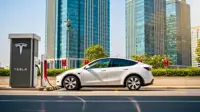Global warming: time is running out (Part 3)
15 Dec 2007
In 1947, by when the world had already woken up to the horrors of nuclear warfare at Hiroshima and Nagasaki in 1945, the Bulletin of the Atomic Scientists, a respected magazine covering global security and public policy issues, came up with the Doomsday Clock. It is a symbolic clock face maintained at the University of Chicago and its image printed on every subsequent issue, and it uses the analogy of the human race being at a time that is “minutes to midnight” where midnight represents “catastrophic destruction”.
Although originally created to represent the threat of global nuclear war, it has since evolved to include nuclear weapons, climate-changing technologies and “new developments in the life sciences and nanotechnology that could inflict irrevocable harm.” As of today, the minute hand stands at five minutes to midnight, a heightened state of alert not seen since the Cold War escalated under Ronald Reagan. The current state of perceived danger is not only due to the Iran-US standoff or North Korea’s belligerence; experts assessing the dangers posed to civilisation have added climate change to the prospect of nuclear annihilation as the greatest threats to humankind.
 In this context, Leonardo DiCaprio may seem somewhat optimistic naming his documentary The 11th Hour, giving mankind a full one-hour before catastrophe occurs, quite in contrast to the mere minutes predicted by the Doomsday Clock. It may be difficult to imagine one-time global teenage heartthrob and present Oscar contender Leonardo as an environmental crusader, but please keep in mind that very few people would have imagined that Jack Dawson of Titanic would have metamorphosed successfully into Howard Hughes of The Aviator. Leonardo DiCaprio never ceases to surprise.
In this context, Leonardo DiCaprio may seem somewhat optimistic naming his documentary The 11th Hour, giving mankind a full one-hour before catastrophe occurs, quite in contrast to the mere minutes predicted by the Doomsday Clock. It may be difficult to imagine one-time global teenage heartthrob and present Oscar contender Leonardo as an environmental crusader, but please keep in mind that very few people would have imagined that Jack Dawson of Titanic would have metamorphosed successfully into Howard Hughes of The Aviator. Leonardo DiCaprio never ceases to surprise.
Perhaps the environmental bug bit DiCaprio when his year-2000 backpacker cult-classic The Beach garnered immense negative publicity for the alleged bulldozing and landscaping of the natural beach setting of Ko Phi Phi Leh in Thailand to make it more “paradise-like”. However, Nature struck back and the 2004 tsunami and removed most of the artificial landscaping, restoring the beach to its former glory.
DiCaprio practices what he preaches – flying commercial instead of chartering jets, and using solar panels and hybrid vehicles. He has also bought an island in Belize where he is planning to create an eco-friendly resort, and has also influenced his Hollywood buddies like Orlando Bloom and Penelope Cruz to go green.
The 11th Hour has Leonardo DiCaprio written all over it – he co-wrote, co-produced and narrated it. It was directed by Leila Conners Petersen and Nadia Conners and financed by Adam Lewis, Pierre André Senizergues and Doyle Brunson, and distributed by Warner Independent Pictures. Its world premiere was at the 2007 60th Annual Cannes Film Festival (May 16-27, 2007) and it was released on August 17, 2007, about one year after Al Gore’s An Inconvenient Truth hit the screens.
DiCaprio explains his stance regarding global warming in the movie, and says, “Global warming is not only the number one environmental challenge we face today, but one of the most important issues facing all of humanity ... We all have to do our part to raise awareness about global warming and the problems we as a people face in promoting a sustainable environmental future for our planet.”
However, the film does not restrict itself to the opinions of one man or group of men. It encompasses viewpoints of many prominent thinkers, scientists and leaders of the day, including noted physicist Stephen Hawking, Wangari Maathai (the first African woman to receive the Nobel Peace Prize), famous activist-journalist Paul Hawken and former Soviet premier Mikhail Gorbachev. The film documents the grave problems facing the planet's life systems today. Global warming, deforestation, mass species extinction, and the depletion of the oceans' habitats are all addressed, with the inference that mankind’s survival is at stake.
However, it does offer light at the end of the tunnel. By calling for modified human activity globally and rethinking of progress through technology, social responsibility and conservation, the film paints a possible future of harmonious survival. Instead of trying to tame nature, the film stresses on co-existence with it. Scientists and environmental advocates such as David Orr, David Suzuki, and Gloria Flora paint a picture for a radically new and different future in which it is not humanity's intent to dominate the planet's life systems, but to mimic and coexist with them.
The film makes clear the predicament facing mankind today, until restorative steps are taken. And the greatest brains amongst us share this view. By stressing on mankind’s continual development by being in sync with nature, it offers an alternative path towards progress that does not involve poisoning our own home. Because, as Carl Sagan said about the Earth, “That's all we've got”. We have trampled on Earth long enough (refer to the publicity poster of the documentary); it’s time to offer a healing touch.
>> Al Gore speaks an Inconvenient Truth (Part 2)
>> The Fragile Earth – Life in the balance (Part 1)






.webp)















